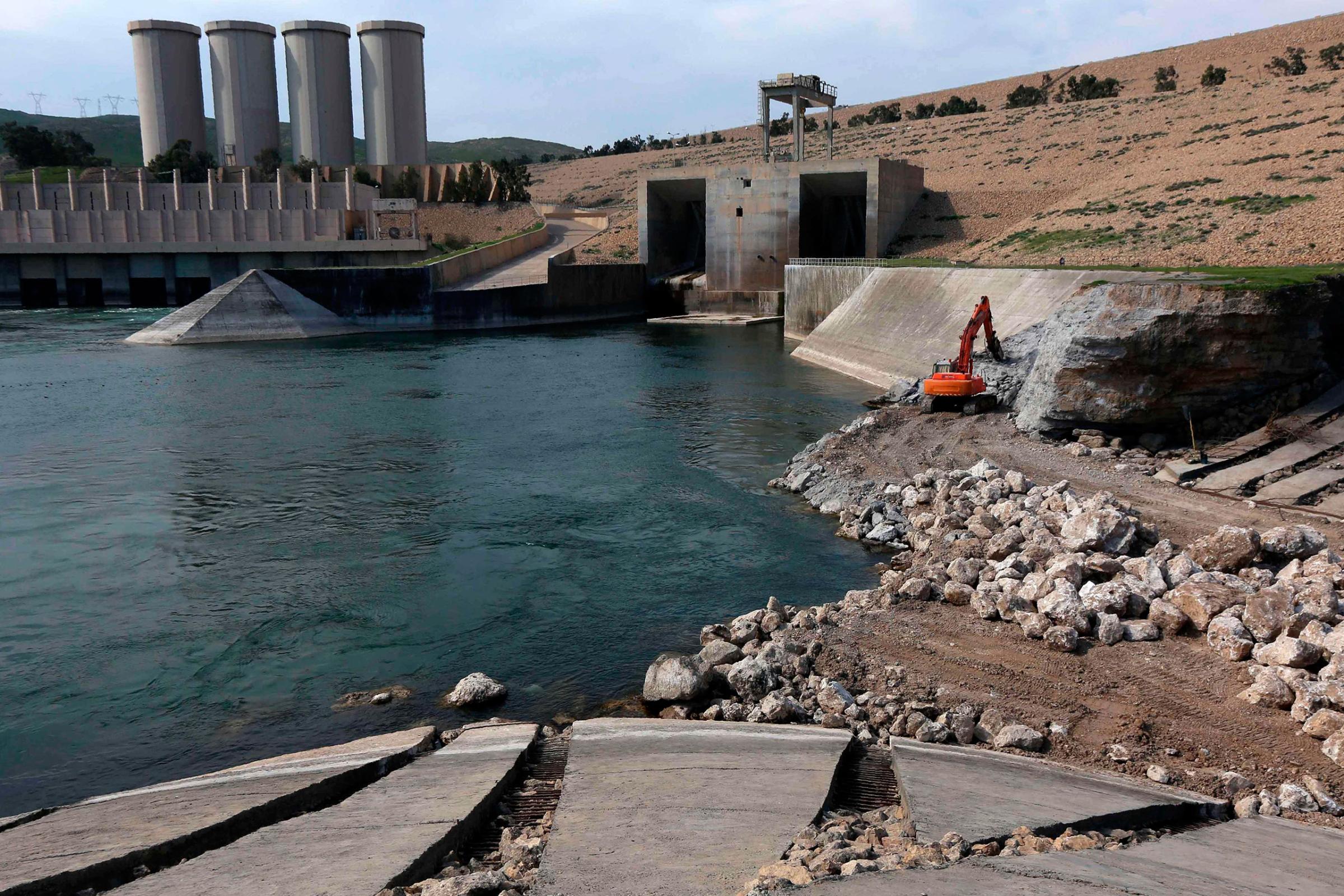
Correction appended, March 26th
Khawla Shaban lived under the Islamic State of Iraq and Syria (ISIS) for almost seven months, after the militants took over her village of Wana in northern Iraq. “We didn’t leave the house the whole time they were here,” says Shaban, standing in front of her home, on the bank of the Tigris River.
Today, the Islamic State is gone — pushed out of Wana in January 2015 by Iraqi Kurdish peshmerga, aided by U.S. air strikes. On Thursday, Iraqi forces launched a campaign to liberate even more territory around ISIS-occupied Mosul, the first move in a broader operation to rid the province of the extremist group for good.
But that work could be undone in an instant by an even greater threat than ISIS: the deteriorating Mosul Dam, whose collapse would send a wall of 11 billion cubic meters of water crashing toward Iraq’s second biggest city, killing more Iraqis in minutes than the total dead since the U.S. invasion of 2003.
The U.S. considers the threat so dire it issued a warning to U.S. citizens in February about the dam’s collapse, above its already stern warnings about travel to Iraq. President Obama even sent a note to Iraqi Prime minister Haider al-Abadi that same month, urging the government to take long-delayed action.
In Wana, the first village downstream from the dam, the threat is considered more immediate than that of the Islamist extremists holed up in Mosul. “They are both scary, but I’m more scared of the dam,” says Shaban. “If it breaks there will be no chance for survival. It will wipe us all out.”
The Mosul Dam was built in the early 1980s and was one of many grand infrastructure projects rolled out by Saddam Hussein and his Baath Party. Engineer Omar Salih started work on the dam the year it opened. He says the German and Italian teams that helped build the dam said the location was no good, as the riverbed here is made of unstable soft soil and gypsum, a mineral that dissolves as water runs through it. The structure had to be grouted daily, to keep water from seeping through.
“But President Saddam Hussein insisted on the location,” says Sahil. That’s likely because villages like Wana and most of the sounding area are Sunni Arabs, Saddam’s once loyal power base. Here the structure is away from his Kurdish enemies who could attack the dam.
The fragility of Mosul Dam has long been a concern; in 2006, the U.S. Army Corps of Engineers called it “the most dangerous dam in the world.” But after ISIS took over the facility in 2014, the constant work required to keep the dam intact was stopped. Salih says even after the militants were pushed out of the dam, it took months for the critical maintenance to resume.

Now, inside the dam complex, buildings are pocked with bullet holes from the battles that unfolded as the dam changed hands. Currently, hundreds of Kurdish fighters secure the dam, and say they won’t let it fall into militant hands again.
It’s not clear, however, who is in charge of keeping the dam from collapse — the national government in Baghdad or the Kurdistan Regional Government. Baghdad, with foreign help, is footing the approximately $4 million per year maintenance costs required to keep the structure intact. An Italian engineering firm has signed a contract with Iraq to help with the repairs and is expected to arrive in mid-April.
Inside Mosul Dam, TIME meets with head engineer Aquil Muslim, who has worked at the dam for a decade and oversees the constant grouting and filling of cracks in the structure. The tunnel in which he works has pools of water on the floor, and the walls show marks of grouting.
Several new cracks form every day, Muslim says. “Some holes need 50 tons of cement.” He says the work is constant, 24 hours per day, seven days a week. However, Muslim, and along with other engineers and Iraqi officials at the site say the threat of collapse is not as great as the U.S. alleges. “We haven’t seen any tangible evidence that the dam will collapse,” he says.
The U.S. says the dam is at a higher risk than usual of bursting this spring as snow melts in the northern Iraqi mountains, running into the reservoir behind the dam and building pressure on the decades-old structure. “But this a normal thing that happens every year,” Muslim counters. “We’ve always been able to sort these problems.”
If they don’t, the consequences would be devastating. A recent U.S. government report concluded that between 500,000 to 1.47 million Iraqis who live along the Tigris downstream of the dam “probably would not survive” its collapse.
Even so, residents of Wana are staying put — content with the messaging by some in the Iraqi government, including its minister for water resources, that the dangers of the dam have been overstated. “I will not leave,” says 45-year-old Khaled Mohammed Ali. “We’ve seen the threat of ISIS, but so far we haven’t seen the threat from the dam.”
— With reporting by Salar Salim
Correction: This article originally misstated when Wana was retaken. It was January 2015.
More Must-Reads from TIME
- Why Trump’s Message Worked on Latino Men
- What Trump’s Win Could Mean for Housing
- The 100 Must-Read Books of 2024
- Sleep Doctors Share the 1 Tip That’s Changed Their Lives
- Column: Let’s Bring Back Romance
- What It’s Like to Have Long COVID As a Kid
- FX’s Say Nothing Is the Must-Watch Political Thriller of 2024
- Merle Bombardieri Is Helping People Make the Baby Decision
Contact us at letters@time.com